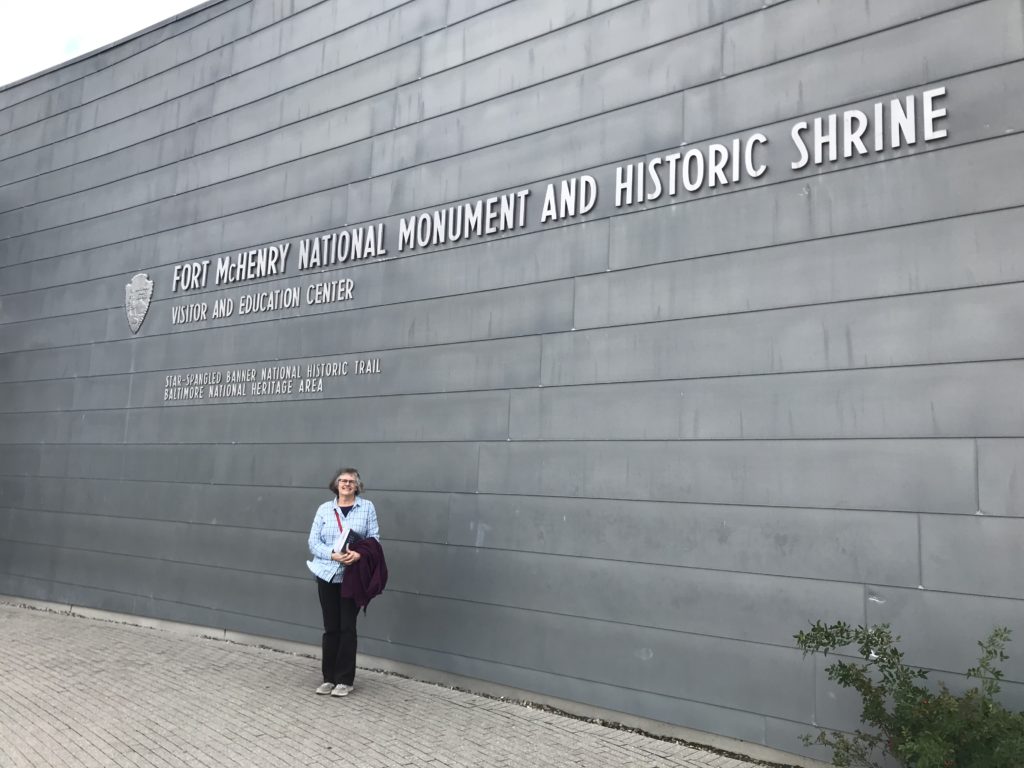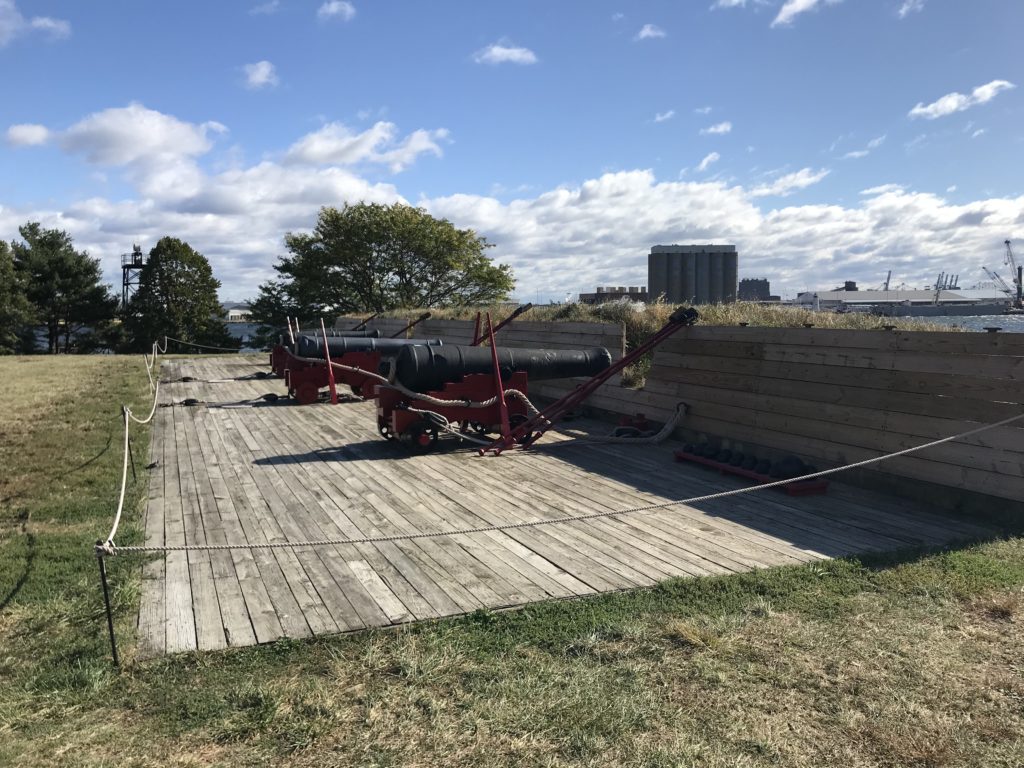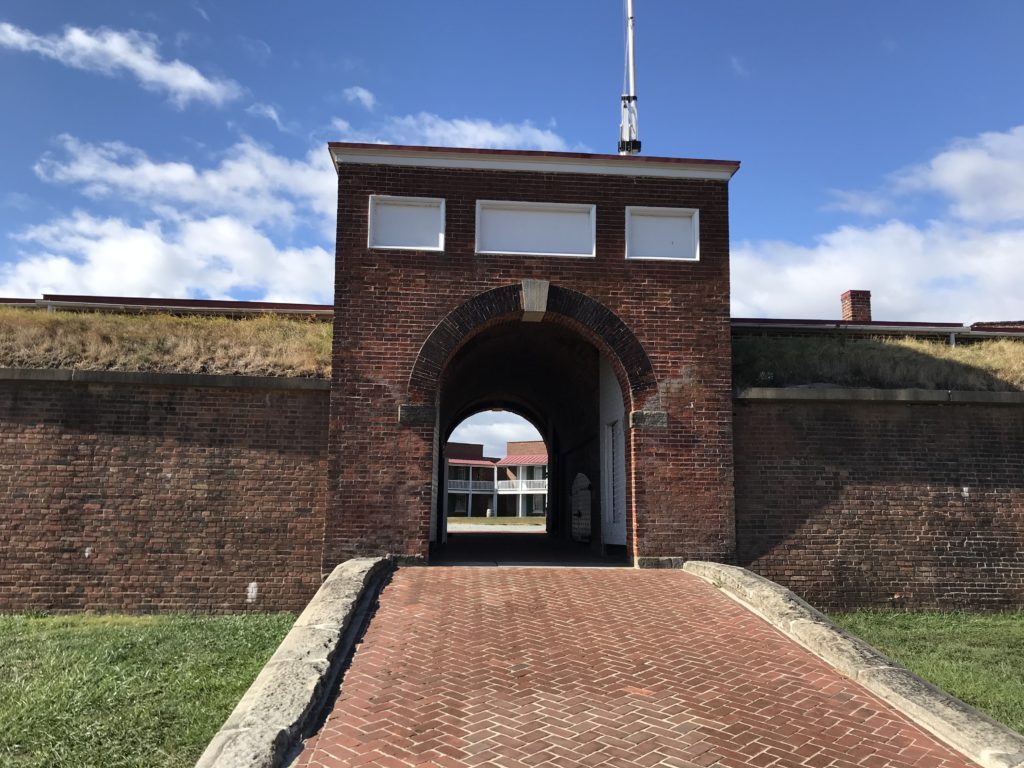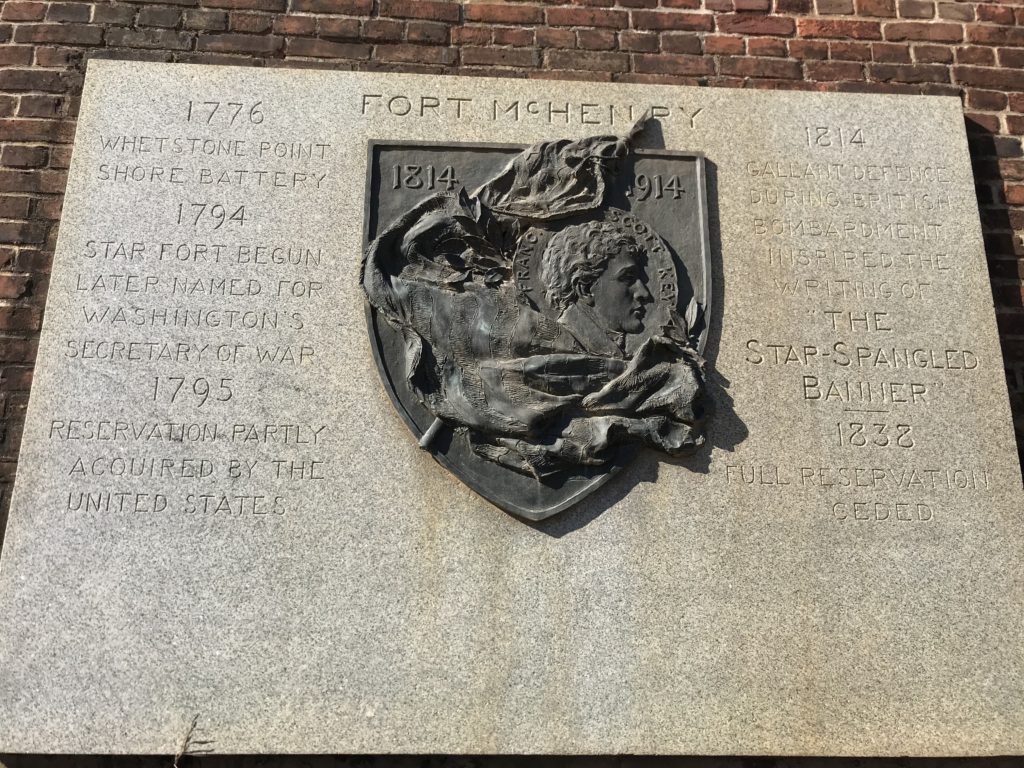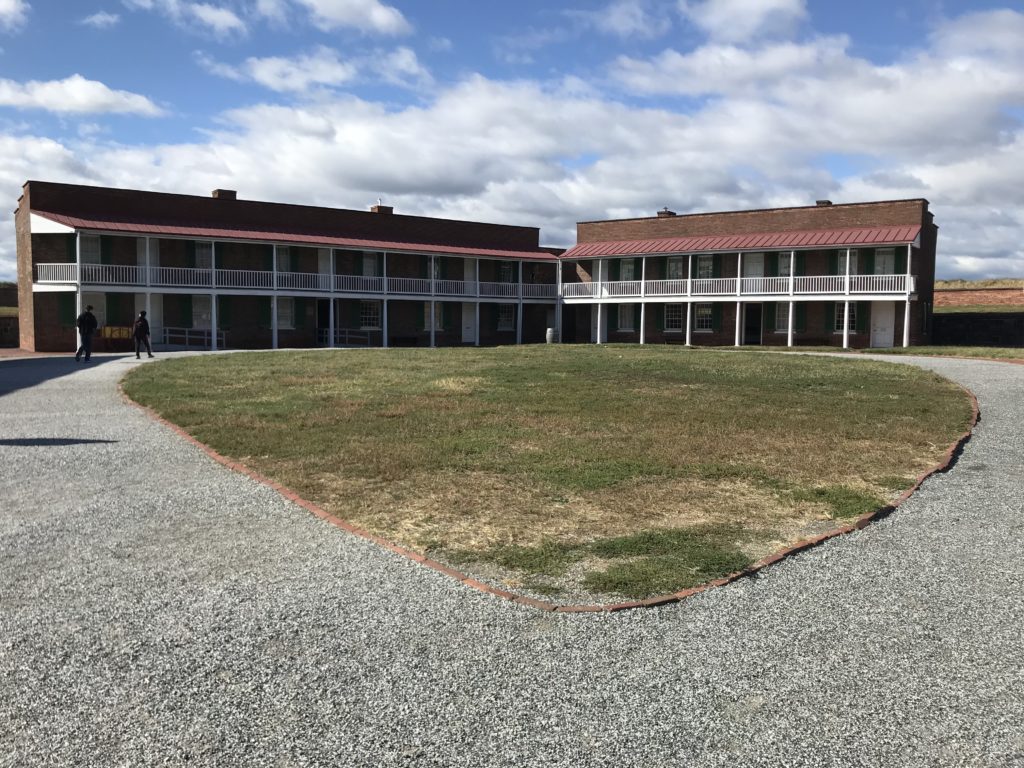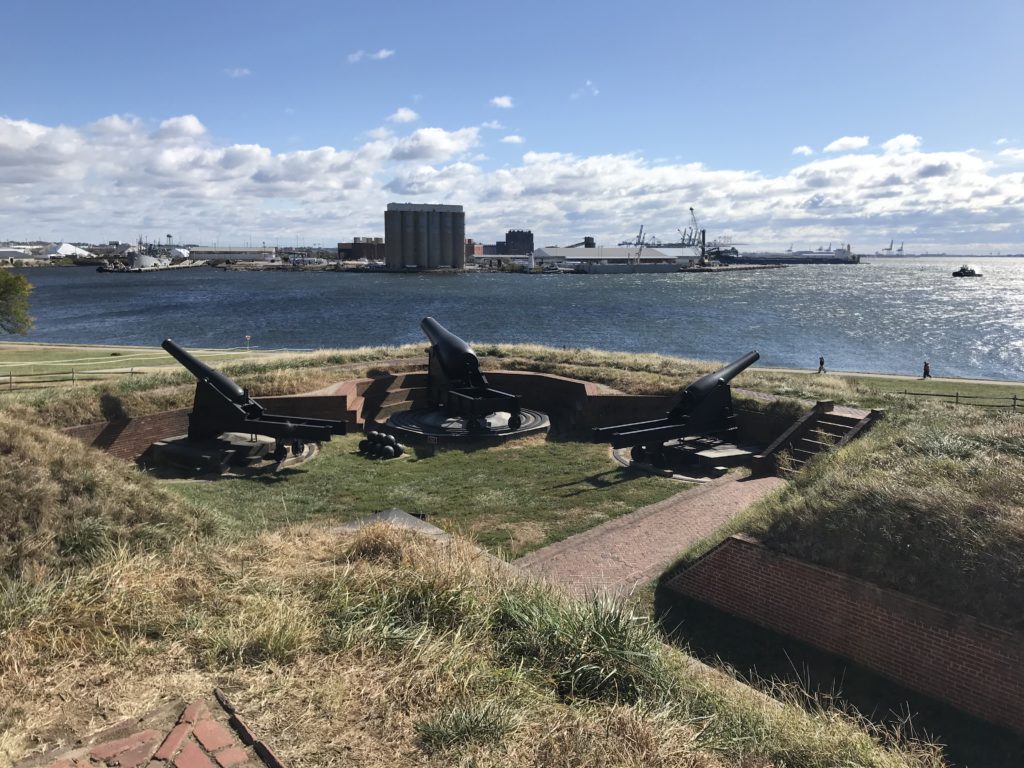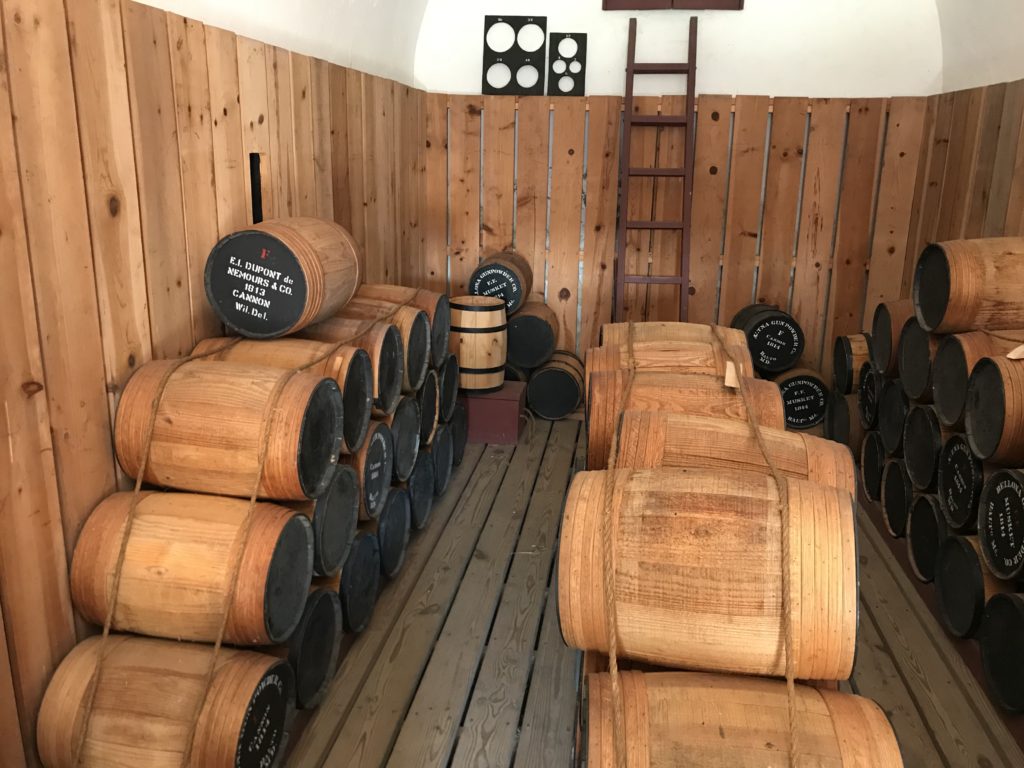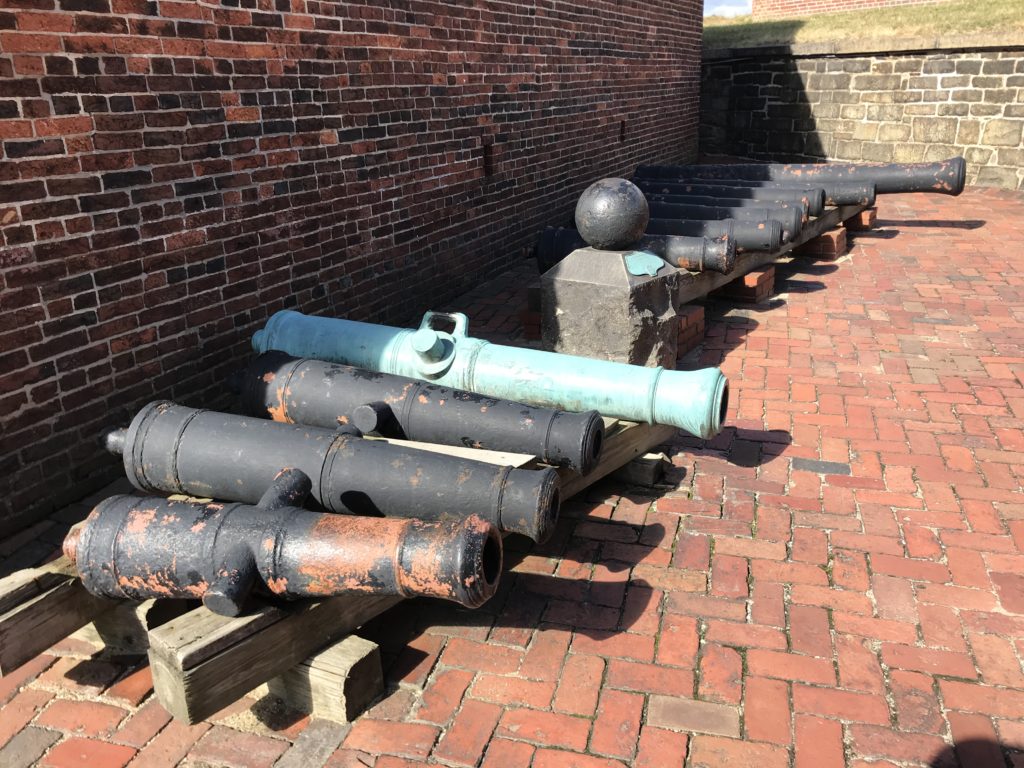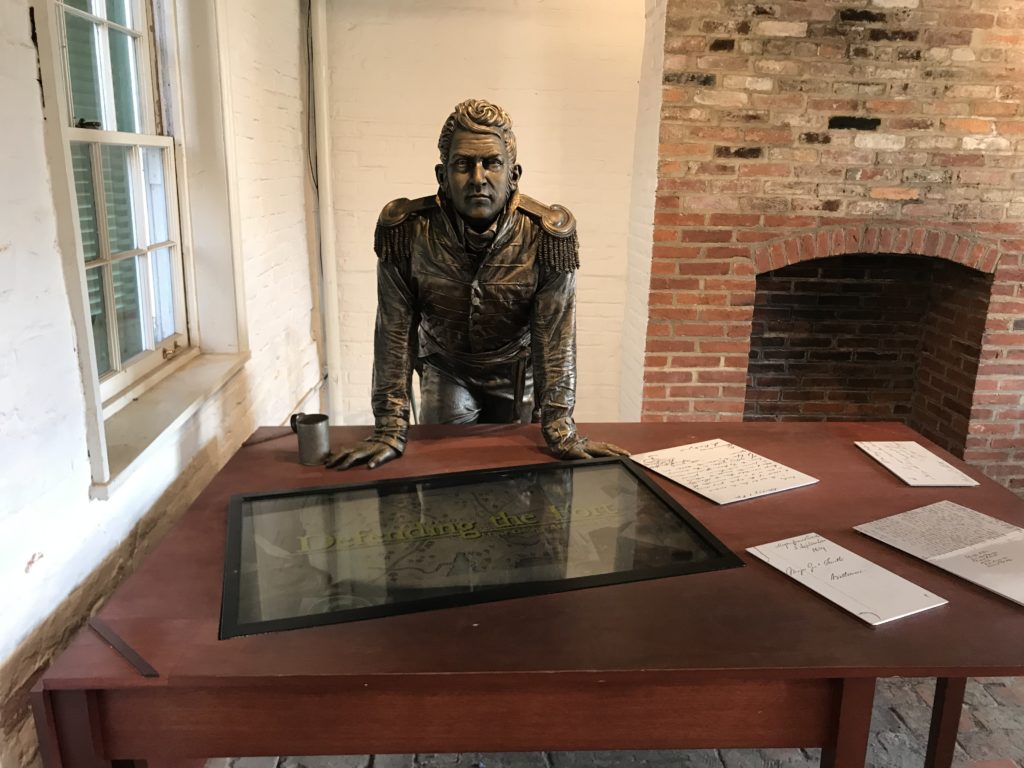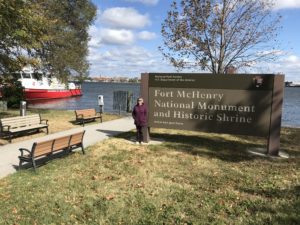 While Tom and I were in Harrisburg, we took a day trip to Baltimore to visit the two National Park sites there. The first of these is Fort McHenry National Monument and Historic Shrine. The Historic Shrine, in particular, caught my eye. What is a National Historic Shrine? I still don’t know because Fort McHenry is the only place so designated in the United States.
While Tom and I were in Harrisburg, we took a day trip to Baltimore to visit the two National Park sites there. The first of these is Fort McHenry National Monument and Historic Shrine. The Historic Shrine, in particular, caught my eye. What is a National Historic Shrine? I still don’t know because Fort McHenry is the only place so designated in the United States.
Fort McHenry is a pentagonal fort located at the mouth of Baltimore Harbor. It is best known for its role in the War of 1812, when it successfully defended the harbor from an attack by the British navy from Chesapeake Bay on September 13–14, 1814. It was first built in 1798 and was used continuously by the U.S. armed forces through World War I and by the Coast Guard in World War II. Because of the ways it has been used, it doesn’t look very different from any of the other coastal forts we visit.
But when we link up Francis Scott Key to Fort McHenry, then it becomes enshrined in American history and lore. Francis Scott Key was a lawyer who sailed out to the British prison ships in Chesapeake Bay to negotiate the release of several American prisoners of war. While he was negotiating, the British attacked Baltimore by land and sea. The attack was similar to the British attack on Washington DC months earlier. This time, however, the Americans were prepared. Fort McHenry was heavily defended and the land approach had been reinforced with earthworks and thousands of American troops.
Fort McHenry endured 25 hours of relentless pounding from British warships. The British ships had a range of two miles, while the American cannons had a range of one mile. Thus the British warships could keep out of range of the cannons at the fort during the bombardment. The Americans had also prepared their defense by sinking 22 ships in the harbor, blocking the harbor, so the British ships could not move into the harbor.
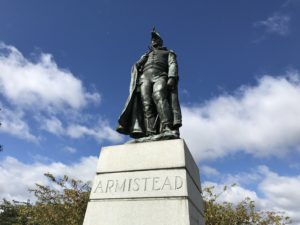 Before the battle began, Major George Armistead, the commanding officer, had a garrison flag made for Fort McHenry. Major Armistead desired “to have a flag so large that the British will have no difficulty in seeing it from a distance.” The huge flag, 30 feet by 42 feet, was made by Mary Pickersgill, a well-known flagmaker in Baltimore. During the bombardment, Francis Scott Key waiting anxiously out in the harbor. When the warships stopped firing, and the smoke cleared the next morning, Francis Scott Key saw the garrison flag still waving proudly over Fort McHenry. It inspired him to write the words to “The Star Spangled Banner.”
Before the battle began, Major George Armistead, the commanding officer, had a garrison flag made for Fort McHenry. Major Armistead desired “to have a flag so large that the British will have no difficulty in seeing it from a distance.” The huge flag, 30 feet by 42 feet, was made by Mary Pickersgill, a well-known flagmaker in Baltimore. During the bombardment, Francis Scott Key waiting anxiously out in the harbor. When the warships stopped firing, and the smoke cleared the next morning, Francis Scott Key saw the garrison flag still waving proudly over Fort McHenry. It inspired him to write the words to “The Star Spangled Banner.”
Tom and I started our visit with the small but very good museum in the Visitors Center of Fort McHenry. We were particularly impressed by the interactive map of the War of 1812. It showed the war, battle by battle and year by year. We also saw the movie, which was heavy on the “Star Spangled Banner” and a little light on the actual battle for Baltimore. When the movie finished, the screen lifted to show the fort out the window with a big garrison flag over it.
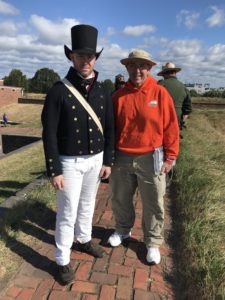 After perusing the Visitors Center, we walked out to Fort McHenry and enjoyed the wonderful view of Baltimore Harbor. We explored the fort and all the buildings, dodging visiting school groups. We got to talk to a living history ranger about the battle and he helped clear up who was at the fort fighting for the Americans. He was dressed as a sailor and most of the the men manning the fort were sailors.
After perusing the Visitors Center, we walked out to Fort McHenry and enjoyed the wonderful view of Baltimore Harbor. We explored the fort and all the buildings, dodging visiting school groups. We got to talk to a living history ranger about the battle and he helped clear up who was at the fort fighting for the Americans. He was dressed as a sailor and most of the the men manning the fort were sailors.
We enjoyed our visit to Fort McHenry very much. Navigating the roads to the fort was a little challenging, but there was plenty of parking at the fort. It is good to remember the valiant men who fought, against the odds, and held off the might of the British Empire. The War of 1812 is also called, “The Second War of American Independence.”

